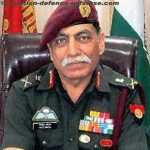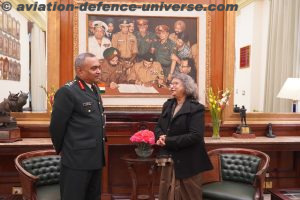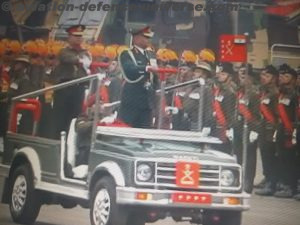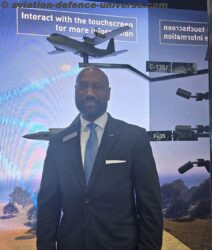“The armed forces should be empowered. They should be young and remain battle-ready. Continuous reforms are underway for achieving these goals.” Prime Minister Modi – 15 Aug 2023.
By Lt. Gen Vinod Bhatia PVSM, AVSM, SM, (Retd.)
New Delhi. 14 January 2024. As the army celebrates the 76th Army Day on 15 January 2024, it is also an opportunity to review the many changes and challenges in an emerging global world (Dis) order and ensure that the Indian Armed Forces specially the Army continue to be present relevant and future-ready. A risen, responsible, resurgent India, a regional power and a global leader needs a future-ready Army to protect and project her national interests and assets, ensuring peace and stability, an imperative for economic growth and development contributing to the well-being of 1.4 billion Indians.
On the 75th Army Day, exactly a year ago, while addressing the Army at Banglore Shri Rajnath Singh, India’s Defence minister underlined the need for a future-ready Army, saying “Every today becomes tomorrow’s yesterday. Any military or organisation, which prepares itself only according to the present soon becomes old and ineffective. It is imperative to work on tomorrow, the day after and the next 25-30 years. This will ensure our security and prosperity. Let us together build a developed and secure India,”. The directions to and for the Army are clear, concise and categorical.
India’s security challenges are defined and definite, however, the future is uncertain and disruptive, dictated by an emerging world order driven by new-age technologies. A two-front war is not an option for India and hence it is imperative that India has a credible war prevention strategy with China and a war-waging strategy / proactive strategy against Pakistan, mitigating a collaborative threat or a two-front war. The nation has to prepare for a war in all its dimensions and intensity from small wars to space wars, hybrid in content and possibly collusive and collaborative in context. India’s security concerns must match with the apparent dichotomy in the Chinese policy pronouncements. It should also be based on its own core interests. The dynamics of the security environment for India would remain volatile and pose multidimensional security challenges in multiple domains. The nature of war has been and will remain an act of imposing one’s will on the adversary.
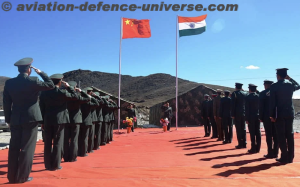 However, the character of war i.e. how future wars will be waged and fought has undergone a change due to numerous geo-political, and socio-economic factors, technological advancements, and military innovations. There are relevant lessons to be learnt from the Russia – Ukraine war and the Israel – Hamas conflict. Future conflicts are likely to involve states or a state-sponsored actor as one of the participants in the conflict. States will also predominantly determine the spectrum, location, intensity and duration of conflicts.
However, the character of war i.e. how future wars will be waged and fought has undergone a change due to numerous geo-political, and socio-economic factors, technological advancements, and military innovations. There are relevant lessons to be learnt from the Russia – Ukraine war and the Israel – Hamas conflict. Future conflicts are likely to involve states or a state-sponsored actor as one of the participants in the conflict. States will also predominantly determine the spectrum, location, intensity and duration of conflicts.
The last major driver of change that has had the foremost impact on the character of war and the future operating environment is technology. The changing nature of warfare driven by new-age technologies will have to be factored into the Indian army’s doctrines, organisations and wherewithal. World over, the strategic community argues that Artificial Intelligence (AI) based autonomous systems employing precision targeting and adaptive learning technologies complemented by cyber and information wars will dominate future conflicts and also contribute to effective deterrence. The Indian army needs a focused approach, dedicated resources and an implementable action plan for the induction, absorption and exploitation of new-age technologies. This is a major challenge for the army. Replicating technology innovations available in the world will be a recipe for disaster for India as our operating environments are different with the Army deployed from sea level to Siachen, operating from minus 50 to plus 50-degree centigrade temperatures. Hence the technology advancements and innovations will have to meet the specific requirements of our operational roles and tasks.
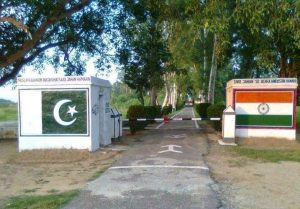 Accordingly, the force structure has to be a judicious mix of ‘Threat Based’ to meet and mitigate the China- Pakistan threat and ‘Capability Based’ to further the national interests and aspirations, the military being an ‘ Essential Element of National Power’.It is an established fact that all Armies in the world always prepare to fight the last war. To assume that the Indian Army is not prepared to combat future security challenges would be incorrect, however, the concepts, doctrines, capabilities and capacities required may not be optimal. The resistance to structural and systematic changes, a review of policies, procedures and processes to keep pace with future security challenges and modern-day multi-domain warfare is imperative to meet the aspirations of a ‘ NEW INDIA’.
Accordingly, the force structure has to be a judicious mix of ‘Threat Based’ to meet and mitigate the China- Pakistan threat and ‘Capability Based’ to further the national interests and aspirations, the military being an ‘ Essential Element of National Power’.It is an established fact that all Armies in the world always prepare to fight the last war. To assume that the Indian Army is not prepared to combat future security challenges would be incorrect, however, the concepts, doctrines, capabilities and capacities required may not be optimal. The resistance to structural and systematic changes, a review of policies, procedures and processes to keep pace with future security challenges and modern-day multi-domain warfare is imperative to meet the aspirations of a ‘ NEW INDIA’.
Challenges also provide opportunities and the Army should see 2024 as the year of opportunities, with the aim to transform the Army from a ‘Military Force to a Military Power’. The army as a major satke holder of national security should ensure the right structures and systems for the ‘Integrated Theatre Commands’ and the ‘Joint Commands’. The army will need to lead this long pending transformation. Theatrisation should have a well-planned and defined ‘Transition Management’ plan in place to ensure that the army also retains the much-needed operation effectiveness at all times.
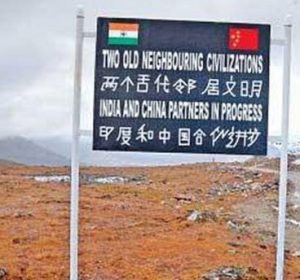 The stand-off along the LAC has forced a long-delayed strategic rebalancing by the army; this will need to be reviewed and restructured in the long term, as the China threat/challenge is the real and present danger. The Army will need sustainable doctrines to ensure the effective defence of LAC at optimal costs and consequences to manpower. One effective strategy to deter China’s aggressive behaviour along the LAC is a ‘THREE R’ strategy ie ‘RADARS, ROADS and RESERVES’. This will need adequate ISR, Infrastructure and tactical/ battlefield mobility. Ab initio deployment all along the 3488 KM India – China border is neither sustainable nor cost-effective. The China threat is also an opportunity to build a multimodal all-weather infrastructure along the India-China border. This is one weakness which is being addressed, as the government gives it the much-required resources and impetus.
The stand-off along the LAC has forced a long-delayed strategic rebalancing by the army; this will need to be reviewed and restructured in the long term, as the China threat/challenge is the real and present danger. The Army will need sustainable doctrines to ensure the effective defence of LAC at optimal costs and consequences to manpower. One effective strategy to deter China’s aggressive behaviour along the LAC is a ‘THREE R’ strategy ie ‘RADARS, ROADS and RESERVES’. This will need adequate ISR, Infrastructure and tactical/ battlefield mobility. Ab initio deployment all along the 3488 KM India – China border is neither sustainable nor cost-effective. The China threat is also an opportunity to build a multimodal all-weather infrastructure along the India-China border. This is one weakness which is being addressed, as the government gives it the much-required resources and impetus.
On account of competing priorities and an election year the defence budget is likely to be incremental at best. Optimal utilisation of the limited budget will to be a major challenge for the Army. The remaining macro recommendations of the Shekatkar Committee should be implemented as early as possible. The Army needs to improve the teeth-to-tail ratio by integrating the civil resources and infrastructure available outsourcing of certain services, and revamping of policies, procedures and processes. The Army also needs to review certain organizations which are suboptimal in today’s environment and context.
Budgetary constraints and the labyrinthine processes have hampered the much-needed acquisition of military hardware and equipment. The MoD has now initiated processes to correct this, however, this still needs greater impetus, public-private partnership and greater autonomy for the Army to drive the change. The Army should enhance capacities and build capabilities related to contact and more importantly non-contact warfare.
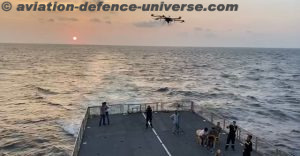 The army should also prepare to shape and contribute to the nation’s vision of SAGAR (Security and Growth for all in the Region), for ‘Operations Other Than War’ and HADR, when and where required. The army hence should designate, equip and train a Rapid Deployment Force capable of deploying and operating in ‘ Time Urgent Response Situations’ anywhere in the world, capable of protecting Indian nationals, interests and assets.
The army should also prepare to shape and contribute to the nation’s vision of SAGAR (Security and Growth for all in the Region), for ‘Operations Other Than War’ and HADR, when and where required. The army hence should designate, equip and train a Rapid Deployment Force capable of deploying and operating in ‘ Time Urgent Response Situations’ anywhere in the world, capable of protecting Indian nationals, interests and assets.
The army needs to expand and exploit ‘Military Diplomacy’which is an integral part of diplomacy and power projection, and, contributes to dispel hostility, building and maintaining trust, sharing best practices and, contributing towards conflict prevention and resolution.
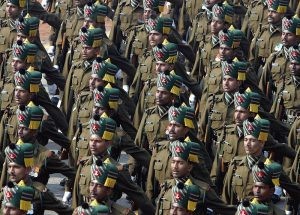 The mantra is Civil-Military Fusion in all spheres of defence capability building and warfighting. For this, there is a need for both formal and informal initiatives and structures. Indian Army is the most versatile, battle-hardened and combat-rich force in the world, with the very best soldiers and leaders and an enviable record of success in all wars, missions and roles. The Indian soldier costs the minimum and delivers the maximum, an unparalleled asset who needs nothing but respect and care. The army should consolidate on this human resource and ensure the well-being and motivation of the soldiers. In the end, Defence Preparedness and Operational Readiness will be dictated by the Army adopting relevant and updated Doctrines, lean Organisations, harnessing the Manpower, provision requisite wherewithal and material, realistic training, the best leadership at all levels and finally identifying, inducting and exploiting new age technologies.
The mantra is Civil-Military Fusion in all spheres of defence capability building and warfighting. For this, there is a need for both formal and informal initiatives and structures. Indian Army is the most versatile, battle-hardened and combat-rich force in the world, with the very best soldiers and leaders and an enviable record of success in all wars, missions and roles. The Indian soldier costs the minimum and delivers the maximum, an unparalleled asset who needs nothing but respect and care. The army should consolidate on this human resource and ensure the well-being and motivation of the soldiers. In the end, Defence Preparedness and Operational Readiness will be dictated by the Army adopting relevant and updated Doctrines, lean Organisations, harnessing the Manpower, provision requisite wherewithal and material, realistic training, the best leadership at all levels and finally identifying, inducting and exploiting new age technologies.
Lt. Gen Vinod Bhatia PVSM, AVSM, SM, (Retd.) – a paratrooper, a die hard soldier and gentleman to the core, is former Director General of Military Operations(DGMO) Indian Army, former DG Infantry and former Director CENJOWS. Here he traces the Indian soldier’s role in securing India and brings his sacrifices and successes infront of the nation. The views in the article are solely the author’s. He can be contacted at editor.adu@gmail.com).






































